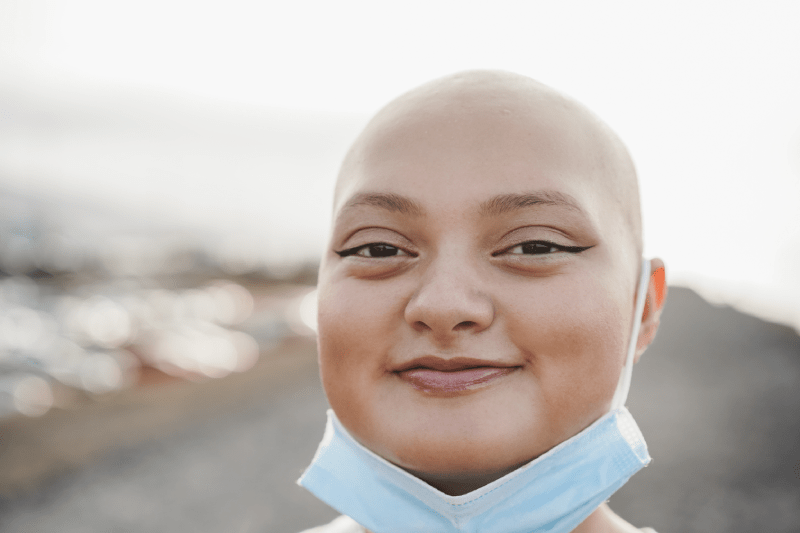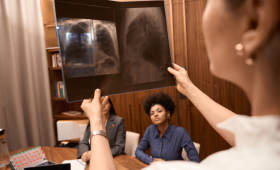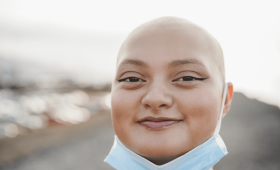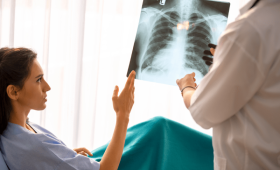Lung Cancer Treatment Methods In Turkey
Lung cancer requires a multidisciplinary approach due to the complexity of its diagnosis and treatment processes. In recent years, modern medicine has significantly increased treatment success with groundbreaking methods such as targeted therapies (smart drugs) and immunotherapy. Turkey, thanks to its specialized staff and technological infrastructure applying these advanced treatment methods, has become an internationally recognized and preferred health destination. This guide details the main methods used in lung cancer treatment, the factors affecting treatment selection, and answers the 35 most frequently asked questions by patients.
What Are The Main Treatment Methods Used In Lung Cancer?
The treatment methods used in lung cancer are personalized according to the type of cancer (Small Cell or Non-Small Cell), its stage, and the patient’s general health status. The main methods include surgical intervention (for early stages), radiotherapy (local tumor control), chemotherapy (systemic treatment), and the revolutionary targeted therapies (smart drugs) and immunotherapy. Generally, these methods are not applied alone but are combined sequentially or concurrently. The aim of the treatment is not only to eliminate the cancer but also to maximize the patient’s quality of life and long-term survival.
How Does Small Cell Lung Cancer Treatment Differ?
Treatment for Small Cell Lung Cancer (SCLC) differs from Non-Small Cell Lung Cancer (NSCLC) because SCLC tends to grow rapidly and spread early. The basic approach in SCLC treatment consists of chemotherapy and concurrent radiotherapy. Surgery is rarely used because the disease is usually already spread at the time of diagnosis. If the disease is caught in a limited stage, prophylactic cranial irradiation (PCI) may be applied after chemotherapy to prevent brain metastases. Success in SCLC depends on the tumor’s rapid response to systemic chemotherapy, making speed and intensity of treatment critically important.
When Is Surgery Applied In Non-Small Cell Lung Cancer?
Surgery in Non-Small Cell Lung Cancer (NSCLC) is applied as the main treatment method for cancer, usually when the disease is caught in early stages such as Stage I and Stage II. The goal of surgical intervention is to completely remove the tumor tissue and the potentially affected surrounding lymph nodes. Sometimes, even Stage III patients can become eligible for surgery if sufficient tumor shrinkage is achieved after chemotherapy and radiotherapy. The decision for surgery is made considering the adequacy of the patient’s lung functions, the tumor’s location, and the surgical team’s experience.
What Treatments Are Recommended For Inoperable Patients?
Treatment for inoperable patients is usually determined based on the cancer stage and genetic features. High-precision radiotherapy methods like Stereotactic Body Radiation Therapy (SBRT) are used for early-stage and inoperable tumors. For locally advanced but non-metastatic disease, concurrent chemoradiation is the standard. In cases where the disease is widespread (metastatic), targeted therapies (smart drugs) or immunotherapy stand out as options that are often more effective and have fewer side effects than chemotherapy.
How Do Targeted Therapies (Smart Drugs) Work?
Targeted therapies (smart drugs) work by blocking specific molecules or signaling pathways critical for the growth and division of cancer cells. These drugs are effective only in patients who have genetic mutations (such as EGFR, ALK, ROS1) found in or overproduced by the cancer cells. Smart drugs generally cause fewer side effects than chemotherapy because they relatively harm healthy cells less. Determining the tumor’s genetic profile before starting treatment is mandatory, making the treatment personalized and much more effective.
What Tests Should Be Done Before Starting Smart Drugs?
Before starting smart drugs (targeted therapy), comprehensive molecular and genetic tests must be performed to determine the tumor’s genetic structure and potential treatment targets. These tests investigate EGFR mutations, ALK fusions, ROS1 rearrangements, and other rare mutations in the tumor tissue sample (sometimes blood sample – liquid biopsy). These analyses enable the selection of the most suitable drug targeting the cancer cells. Since choosing the right drug directly affects treatment success and the patient’s survival time, these tests are vital before commencing treatment.
What Role Does Immunotherapy Play In Lung Cancer?
Immunotherapy has revolutionized lung cancer treatment by helping the immune system recognize and destroy cancer cells. This treatment works by releasing the “checkpoints” (e.g., PD-1/PD-L1) that cancer cells use to disable the immune system. Immunotherapy is often used as a first choice or in combination with chemotherapy in the treatment of metastatic NSCLC. Especially in patients with high PD-L1 expression in the tumor, it can provide longer-lasting and less toxic responses compared to chemotherapy, significantly improving the quality of life.
At Which Stage Of Lung Cancer Is Chemotherapy Used?
Chemotherapy is a traditional treatment method that plays a role in almost all stages of lung cancer. In early stages, it is used before surgery to shrink the tumor (neoadjuvant) or after surgery to reduce the risk of relapse (adjuvant). In advanced (metastatic) stages, it is the main treatment option when no known genetic mutation is present in the tumor or when resistance to targeted therapy develops. In Small Cell Lung Cancer (SCLC), it is the fundamental method included at an early stage due to the rapid spread of the disease and is usually applied with radiotherapy.
In Which Situations Is Radiotherapy Treatment Preferred?
Radiotherapy is preferred in many situations in lung cancer treatment. It can be used for curative (healing) purposes in early stages when the patient is not suitable for surgery due to their general health condition. In locally advanced patients, it is applied concurrently with chemotherapy to control the tumor and lymph nodes. It also has vital importance in palliative (relieving) treatments for pain and symptom control when the cancer has spread to areas like the bones or brain. Modern centers in Turkey use advanced radiotherapy techniques that minimize damage to healthy tissue.
What Is SBRT And What Is Its Advantage In Early Stage Tumors?
SBRT (Stereotactic Body Radiation Therapy) is a modern radiotherapy technique applied specifically to small, early-stage lung tumors, ensuring that a high dose of radiation is very precisely focused on the tumor. Its biggest advantage is the short treatment duration, which usually lasts less than a week (1-5 sessions), and it offers a chance for cure to patients who are not suitable for or prefer not to have surgery. It can achieve success rates similar to surgery, but without the surgical risks (anesthesia, long hospital stay), thus allowing the patient to quickly return to their normal life.
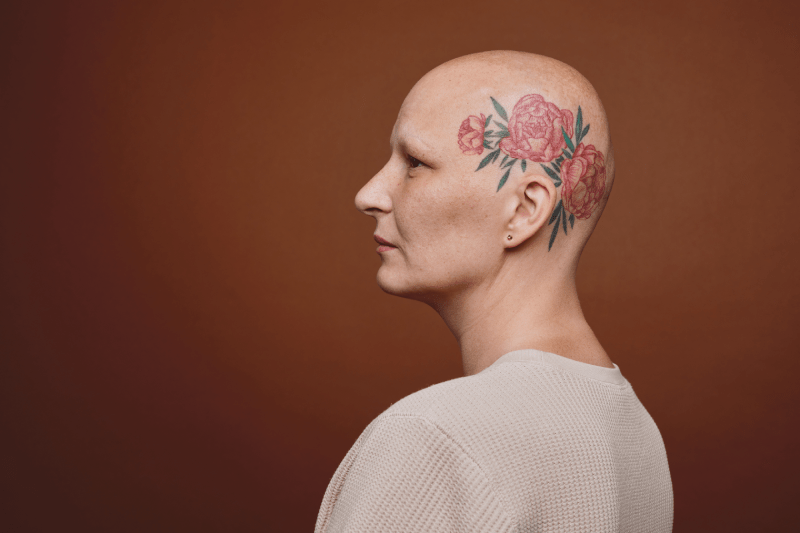
What Does The Multidisciplinary Approach Mean In Lung Cancer Treatment?
The multidisciplinary approach in lung cancer treatment means that the patient’s treatment plan is determined by doctors from different specialties, such as a medical oncologist, radiation oncologist, thoracic surgeon, pathologist, and radiologist, meeting together in a joint council. This approach ensures the best possible evaluation of each patient’s unique tumor characteristics, general health status, and personal preferences. This teamwork is a critical quality standard that guarantees the most current, scientific, and personalized treatment combination is offered to the patient.
What Are The Most Important Factors Affecting Treatment Selection?
The most important factors affecting treatment selection are the type and subtype of cancer (SCLC/NSCLC), the stage of the disease, the tumor’s genetic mutation profile, and the patient’s general performance status (age, accompanying diseases). Surgery is prominent in early stages, while targeted therapies or immunotherapy are preferred in advanced stages, depending on genetic mutations. Weak heart or respiratory functions prevent surgical decisions, while the general performance status determines the intensity of chemotherapy or radiotherapy the patient can handle.
What Are The Lung Cancer Treatment Costs In Turkey?
Despite offering advanced technology and specialized staff, Turkey’s lung cancer treatment costs are quite competitive and economical compared to Western countries. Access to expensive treatments like chemotherapy, radiotherapy (including SBRT), and especially new-generation immunotherapy/smart drugs is possible. Prices vary depending on the type of treatment, the brand of drugs used, and the length of the hospital stay, but generally, a cost advantage of up to 40% to 60% can be offered compared to centers in Europe and America.
How Are Side Effects Managed During The Treatment Process?
Managing side effects during the lung cancer treatment process is vital for maintaining the patient’s quality of life. Nausea, vomiting, and fatigue related to chemotherapy are controlled with potent antiemetic drugs. Skin reactions and difficulty swallowing in radiotherapy are managed with supportive treatments. Side effects of immunotherapy and smart drugs are relatively rarer but, when seen, are quickly managed with drugs like steroids specific to the affected organ system. Effective side effect management increases adherence to treatment.
Is Hair Loss Related To Chemotherapy Temporary?
Yes, hair loss related to chemotherapy, while varying depending on the type and dose of the drug used, is generally a temporary condition. Hair follicles reactivate after chemotherapy ends, and hair starts to regrow within about a month. It can sometimes take several months for the hair to return to its previous density and quality. Psychological support for the patient during this process and the application of methods like scalp cooling to help reduce hair loss are possible.
What Are The Side Effects Of Immunotherapy And How Are They Managed?
The side effects of immunotherapy, unlike chemotherapy, result from the immune system attacking the body’s healthy tissues (autoimmune side effects). The most common are fatigue, skin rashes, diarrhea, and thyroid function disorders. Rarely, more serious side effects (pneumonitis, colitis) may occur. These side effects usually resolve on their own with a mild course, but when they intensify, the treatment may need to be temporarily paused and rapidly managed with suppressive drugs (high-dose steroids).
How Long Does The Recovery Process Take After Surgery?
The recovery process after surgery depends on the method used (open surgery or VATS/Robotic surgery), the amount of lung tissue removed (lobectomy or pneumonectomy), and the patient’s previous health status. The hospital stay with minimally invasive methods (VATS) is usually 3-7 days, while full recovery and return to normal activities can take 4 to 8 weeks. Pain management and breathing exercises are critically important in the first weeks. The patient is encouraged to start respiratory exercises early to recover quickly.
What Is The Role Of Palliative Care In Lung Cancer?
Palliative care in lung cancer, regardless of the disease stage, is an important support system focused on improving the patient’s quality of life from the moment of diagnosis. Its aim is to control symptoms such as pain, shortness of breath, fatigue, and nausea related to cancer or its treatment, and to provide psychological, social, and spiritual support to the patient. Palliative care does not replace cancer treatment; rather, when applied alongside treatment, it can significantly increase the patient’s overall survival and comfort.
How Is The Risk Of Relapse Monitored After Treatment?
The risk of relapse after treatment is monitored by placing the patient under a regular, strict follow-up program. This follow-up is planned with intervals of 3 to 6 months, especially more intensively during the first two years. Follow-up includes physical examination, detailed blood tests, measurement of tumor markers, and tomography (CT) or PET-CT imaging. Early detection of relapse is vital for catching the disease at a stage where it can be treated again and for applying successful salvage therapy.
How Does Smoking Negatively Affect The Treatment Process?
Smoking, even after a lung cancer diagnosis, severely and negatively affects the treatment process and outcomes. Smoking reduces the effectiveness of chemotherapy, increases the severity of side effects related to radiotherapy (especially pneumonitis), and slows down wound healing after surgery, raising the risk of complications. Quitting smoking is the most important and absolute step to increase treatment success and extend the patient’s overall survival; therefore, smoking cessation support should be sought immediately.
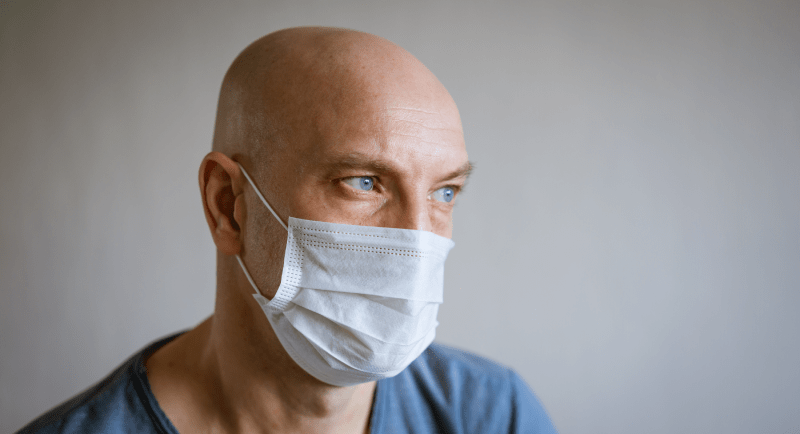
Are There Newly Developed Treatment Methods For Lung Cancer?
Yes, new treatment methods are constantly being developed in the field of lung cancer. The most important recent advances include new-generation drugs targeting rarer genetic mutations (e.g., MET, RET) in targeted therapies and combination immunotherapy regimens that strengthen the immune system response. Furthermore, clinical trials on cell-based immunotherapies like CAR T cell therapy and cancer vaccines are among the promising new approaches.
How Does The Patient’s Age Affect The Treatment Plan?
The patient’s age is an important factor that directly affects the treatment plan, but modern medicine focuses on the patient’s biological age and performance status rather than chronological age. In elderly patients, intensive chemotherapy doses are reduced or less toxic regimens are preferred to minimize side effects. Heart and respiratory reserves are prioritized in surgical and radiotherapy decisions. If the elderly patient’s general condition is good, the same treatment success as younger patients is targeted.
What Is The Importance Of Nutrition In Lung Cancer Treatment?
Nutrition in lung cancer treatment is vitally important for increasing the patient’s tolerance to treatment, preserving muscle mass, and supporting the immune system. Chemotherapy and radiotherapy can cause loss of appetite, nausea, and weight loss. Ensuring adequate protein and calorie intake reduces the risk of cachexia (severe weight loss). Receiving nutritional support throughout the treatment keeps the patient’s energy levels high and accelerates the recovery process, making dietitian support essential.
Is Treatment Possible For Stage Four Lung Cancer?
Although Stage Four (metastatic) lung cancer is generally not considered completely curable, patients’ survival time and quality of life can be significantly extended with current treatment methods. Treatment at this stage is usually based on systemic therapies like targeted therapies, immunotherapy, or chemotherapy. Especially if there is a single metastasis (oligometastatic disease), local treatment of the tumor site with radiotherapy or surgery may also be considered, giving the patient a chance for long-term remission.
What Are The Advantages Of The VATS Method In Surgical Treatment?
The VATS (Video-Assisted Thoracoscopic Surgery) method in surgical treatment has many important advantages over traditional open surgery (thoracotomy). Since VATS is performed through small incisions (keyhole surgery) instead of a large incision in the chest wall, it provides less pain, shorter hospital stays, faster recovery, and better cosmetic results. Furthermore, it is a more advantageous option due to its being a less invasive choice, especially for patients with limited respiratory functions.
What Is The Importance Of Genetic Mutation Analysis In Lung Cancer?
Genetic mutation analysis in lung cancer, particularly in the NSCLC type, is one of the most critical steps that directly affects treatment success and survival. These analyses reveal the tumor’s growth mechanism and guide the patient towards targeted therapies (smart drugs). Detecting the correct mutation ensures that the patient starts a less toxic and more effective treatment (e.g., EGFR, ALK, ROS1 inhibitors) before chemotherapy, extending the lifespan and preventing unnecessary drug use.
What Is Done If Resistance To Targeted Therapy Develops?
Resistance to targeted therapy developing after some time is a natural result of cancer cells adapting genetically. In this situation, the necessary steps include taking a new biopsy (or liquid biopsy) and analyzing secondary (acquired) resistance mutations. Depending on the newly identified mutations, there may be a switch to second or third-generation smart drugs, or the treatment plan may shift to immunotherapy and chemotherapy combinations. Continuous genetic monitoring is essential for keeping treatment strategies dynamic.
Can Chemotherapy And Radiotherapy Be Applied Simultaneously?
Yes, chemotherapy and radiotherapy can be applied simultaneously (chemoradiation), especially in locally advanced (Stage III) NSCLC patients who are not suitable for surgery. Concurrent treatment increases the rate of tumor destruction by enhancing the effect of radiation. However, because this approach increases side effects (especially esophagitis and pneumonitis), the patient’s general health status must be good enough to withstand this intensive treatment. Simultaneous application generally offers the best chance for long-term survival.
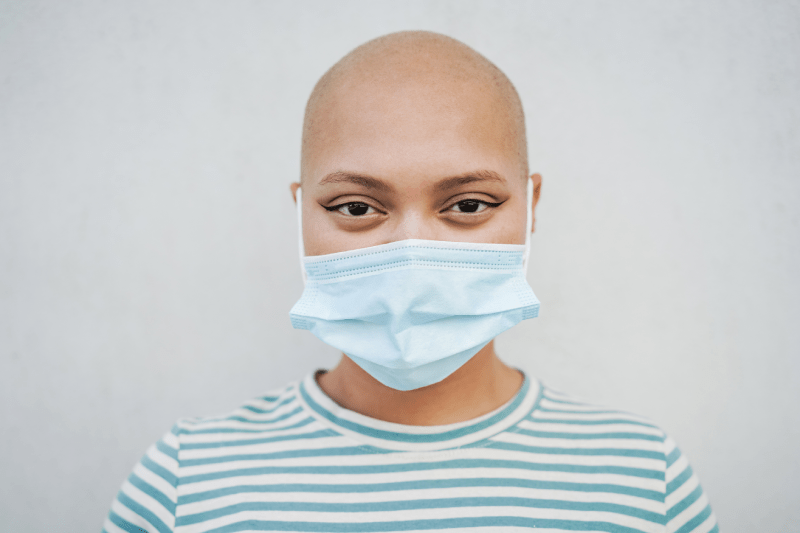
How Are Brain Metastases Treated In Lung Cancer?
Brain metastases are a common problem in lung cancer, and treatment methods vary based on the number and size of the metastases. Stereotactic Radiosurgery (SRS) or whole-brain radiation therapy (WBRT) are generally preferred. More precise SRS is used for single and small metastases, while WBRT may be needed for numerous metastases. If the patient’s tumor has EGFR/ALK mutations, high-dose smart drugs that can cross the blood-brain barrier can also form the basis of the treatment, reducing the need for radiation.
What Is The Importance Of Physical Activity During The Treatment Process?
Physical activity during the treatment process is very important for combating fatigue, preserving muscle mass, and improving quality of life. Extreme fatigue is a common side effect of cancer treatment, and light walking or simple stretching exercises can be effective in reducing this fatigue. Regular physical activity, performed under doctor’s supervision and suitable for the patient’s tolerance, supports both psychological health and indirectly strengthens the patient’s immune system, helping them respond better to treatment.
What Is The Quality Of Lung Cancer Treatment In Turkey?
Lung cancer treatment in Turkey offers a quality that meets international standards, and in many areas, is at a world-class level. Accredited hospitals in the country provide access to VATS and Robotic surgery, advanced radiotherapy techniques such as IMRT/VMAT/SBRT, and the latest immunotherapy/smart drugs. Especially genetic testing, multidisciplinary tumor boards, and patient-focused care services make Turkey a reliable and high-quality center for international patients in terms of both cost-effectiveness and technological equipment.
How Is Patient Follow-Up Performed During The Treatment Process?
Patient follow-up during the treatment process is very important for monitoring treatment effectiveness and managing side effects. During chemotherapy/immunotherapy, the patient is closely monitored with blood tests and doctor examinations before each cycle. Treatment effectiveness is evaluated with tomography or PET-CT imaging, generally performed every 2-3 months. Side effect management is provided through continuous communication channels (phone, digital platforms), ensuring immediate intervention for problems the patient faces and uninterrupted adherence to the treatment protocol.
How Much Do Drug Costs Affect The Treatment Plan?
Drug costs, especially the high prices of new-generation immunotherapy and smart drugs, can significantly affect the treatment plan. Although these drugs are generally covered under the Health Implementation Communiqué (SUT) in Turkey, costs for foreign patients directly determine the price quote. While the cost of these drugs in Turkey is more affordable than in Western countries, accurately determining the drugs to be used (generic/original) and the duration of treatment before starting treatment is critically important for patients’ financial planning.
Are There Advantages To Participating In Clinical Trials?
Participating in clinical trials has important advantages for lung cancer patients. Patients can thus gain access to the newest and most promising drugs and treatment combinations that have not yet been released to the market. These drugs can often be a ray of hope when standard treatment options have been exhausted. Clinical trials can reduce patients’ treatment costs and ensure they are under much stricter medical follow-up, but patients must be fully informed about the potential risks and side effects of every clinical trial.
What Is The Long-Term Life Expectancy After Lung Cancer Treatment?
The long-term life expectancy after lung cancer treatment varies greatly depending on the stage and subtype of the cancer, the type of treatment applied, and the tumor’s biological response. Life expectancy is quite high for patients who achieve complete cure with surgery or SBRT in the early stages. Even in advanced stages, long-term disease control and years of survival can be achieved in many patients thanks to immunotherapy and smart drugs. Response to treatment and maintaining the patient’s general health status are the most important determinants for long-term survival.
Lung cancer treatment is becoming more promising every day thanks to continuously evolving medical technologies. A personalized treatment approach and access to the most current methods are the key to maximizing success.
To access the most current methods and specialized teams in Turkey for your lung cancer treatment, to create a personalized treatment plan, and to receive professional health tourism support during this challenging process, you can contact Cure Holiday. Choosing treatment in Turkey means investing in your health with both high quality and cost-effectiveness.
